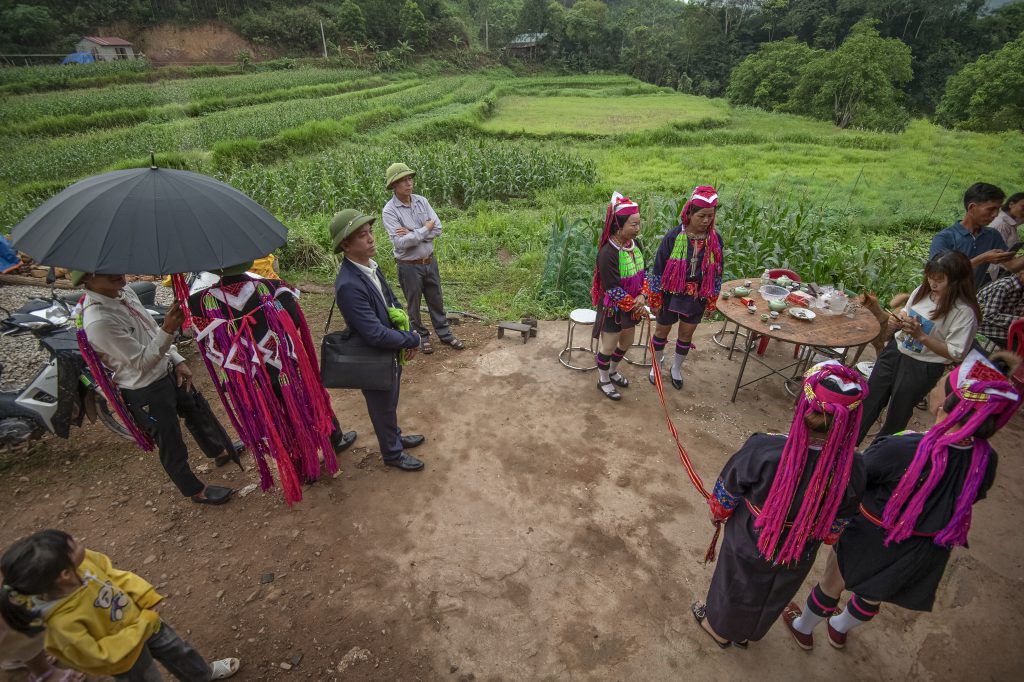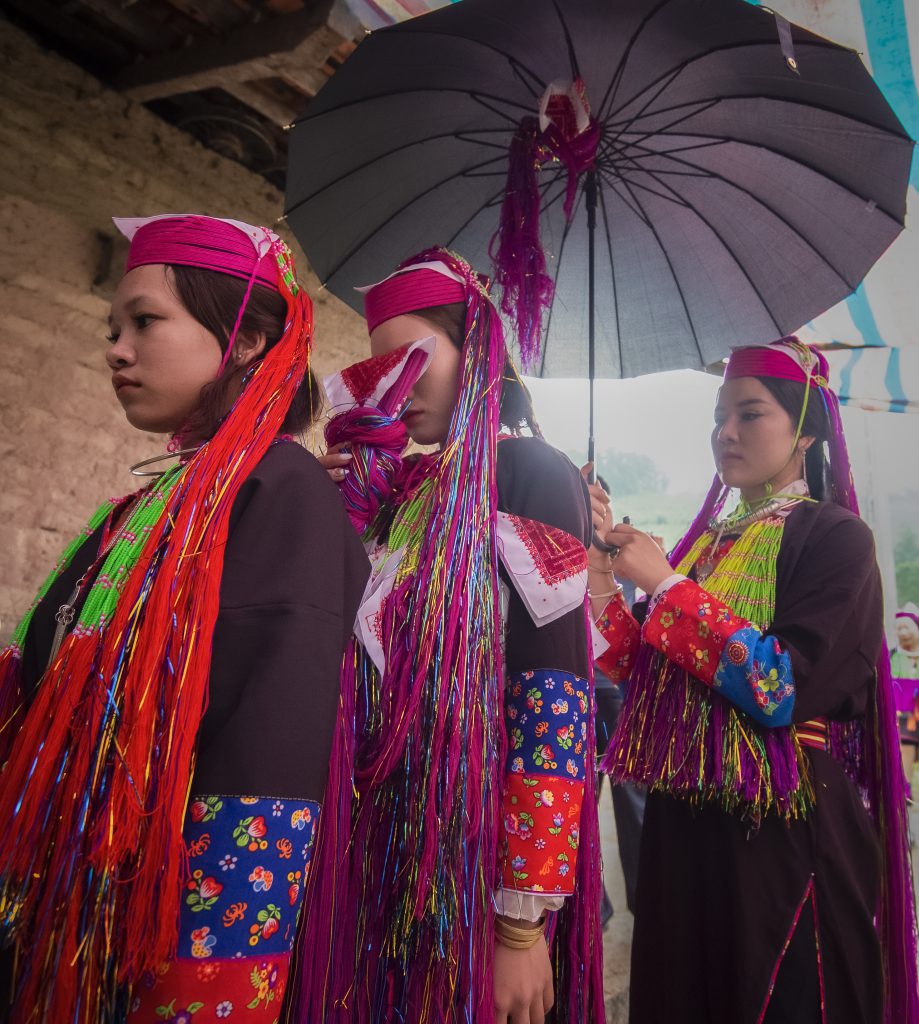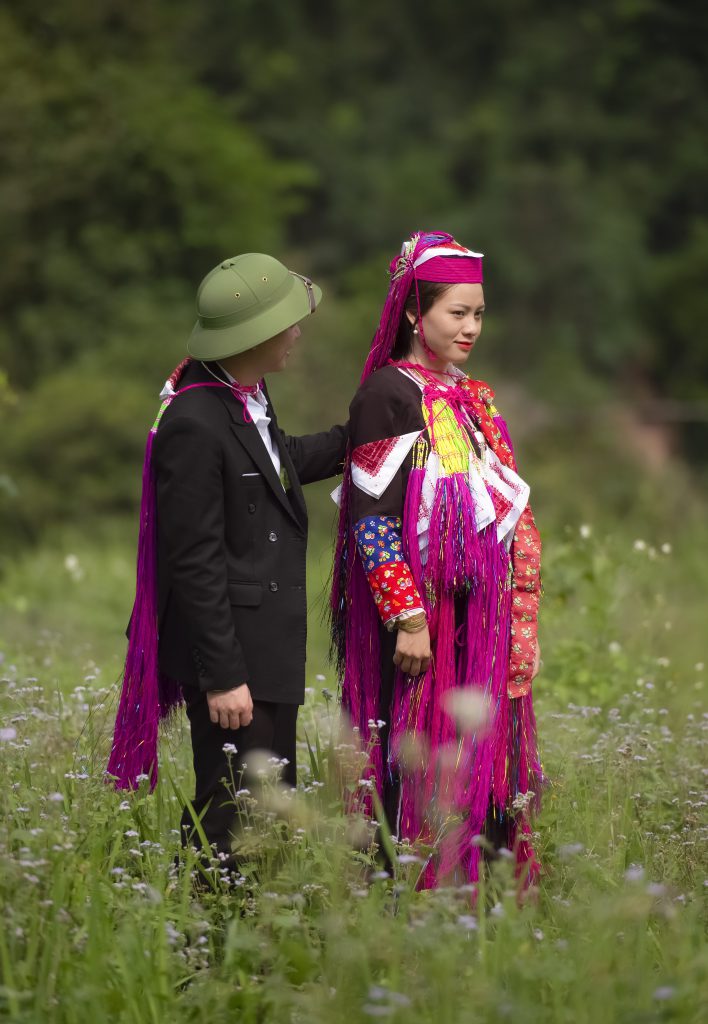Story: Huong Quynh
Photos: Son Tung
A sub-branch of the Dao ethnic group, Dao Thanh Y people have distinct cultural characteristics. The only place these people reside is in the district of Dinh Lap in Lang Son province, in the mountains of northern Vietnam. Throughout the ages, Dao Thanh Y people have lived in mountainous regions, diligently preserving their cultural traditions.

Accompanied by photographer Son Tung, who has attended many ceremonies held by ethnic minority groups in Lang Son, Ha Giang, and beyond, we embarked on a journey to explore the wedding customs of Dao Thanh Y people in Dinh Lap. At the entry point to the village, the elders warmly welcomed us. We were profoundly impressed by their splendid and colorful traditional attire. They explained that before the official wedding ceremony of the young couple—Ly Trang and Van Nam, the families of the bride and groom had conducted various pre-wedding rituals, such as a proposal ceremony and an engagement ceremony.

The bride, Ly Trang, looked resplendent in her traditional attire, which was skillfully tailored, embroidered, and adorned as per the teachings of her grandmother and mother. From a distance, the bride resembled a shy forest orchid coming into bloom. Like other Dao sub-branches, Dao Thanh Y people have a talent for creating outfits that stand out amidst the mountains. Their clothing, hats, and scarves are adorned with multi-colored threads woven into intricate embroidery patterns and decorative details. Dao Thanh Y people do not embroider a lot of intricate indigenous patterns; instead, they combine edge embroidery, beadwork, and long threads with predominantly red, purple, and pink colors. The ceremonial attire is complemented by silver jewelry including necklaces, bracelets, and decorations attached to their belts.

The groom, Van Nam, wore a simpler outfit, opting for contemporary black attire and pith helmet. However, he was accompanied by an attendant holding a black parasol. Most notably, both the bride and groom wore long chains of intricate embroidery made of multi-colored threads and beads, which adorned their heads, necks, and shoulders, and hung down to their knees.
The arrival of the bride is the pivotal moment of the wedding ceremony. At this time, both the bride and groom have their faces covered by square veils. The bride’s family has embroidered words praising her beauty onto her veil. The groom’s family, bearing wedding gifts, stands outside the bride’s gate, while the women from the bride’s family hold a red thread across the path and sing joyful songs about the couple’s special day. Inside the bride’s house, the matchmaker and shaman perform ancestral rituals seeking blessings for the young couple’s happiness and enduring union. After this ritual, the groom’s party is invited inside, and the matchmaker and shaman conduct a ceremony in the bride’s house. Subsequently, they bring the groom closer to the bride. It is at this moment that the couple unveils their faces and gazes into each other’s eyes, marking the sweetest and most romantic moment of the wedding. The bride, her cheeks blushing, follows the groom in greeting the assembled guests before paying respect to their parents and departing for the groom’s house.
At the threshold of the groom’s house, the bride and groom must step over a basin of fire and a raised belt, symbolizing that all evils have been averted. After entering the house, the shaman performs the most crucial ceremony of the wedding, the ritual of binding the bride and groom in marriage. This moment marks the official union of husband and wife. The subsequent festivities, including dances, toasts, and feasts, are the most joyful activities that conclude the wedding ceremony.
For Dao Thanh Y people, this day represents not only the union of a newlywed couple but also a significant community event, demonstrating love, unity, and order within each family and clan.










